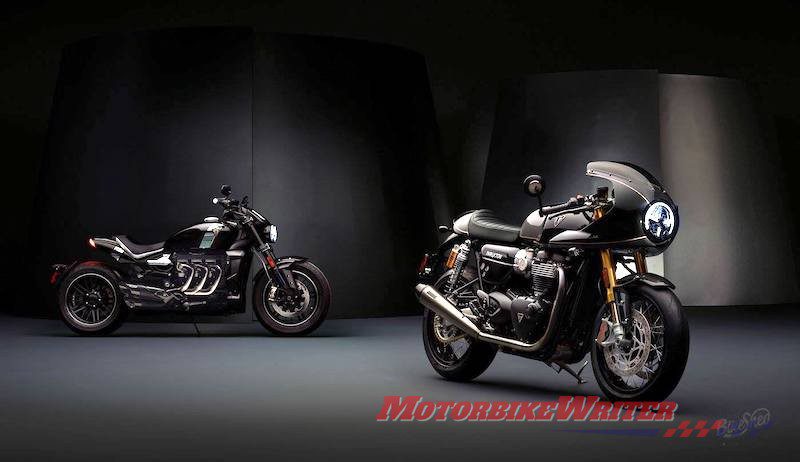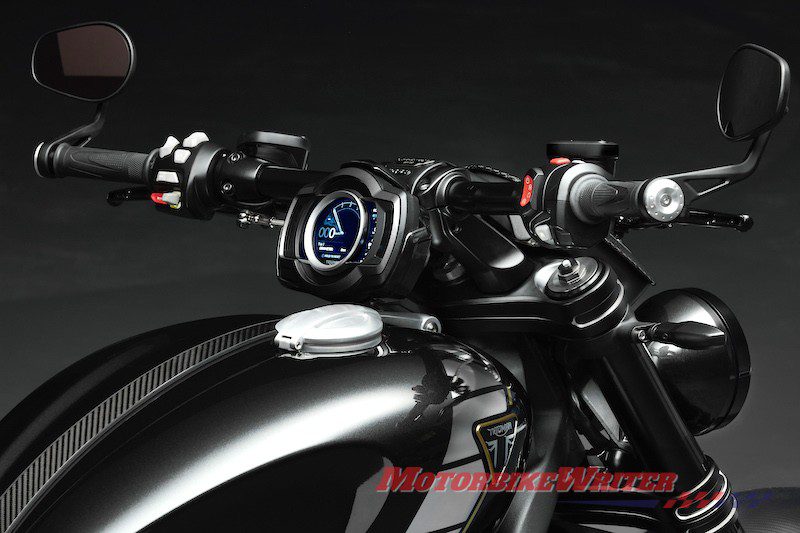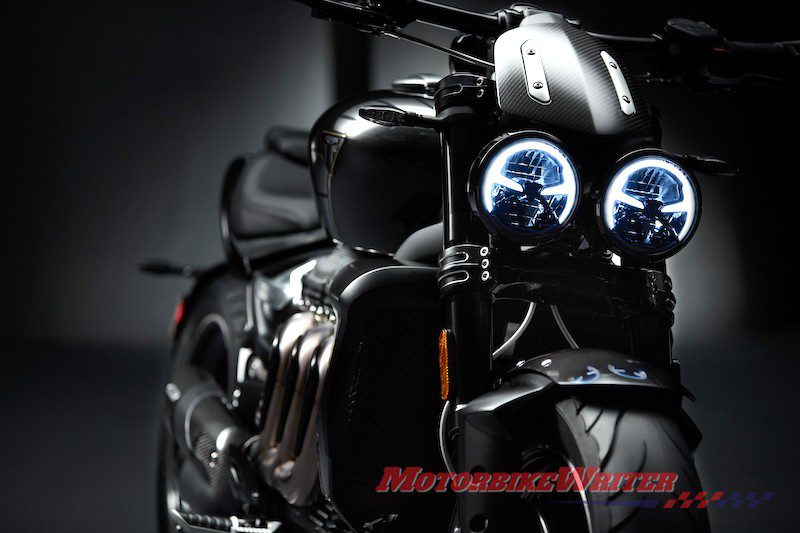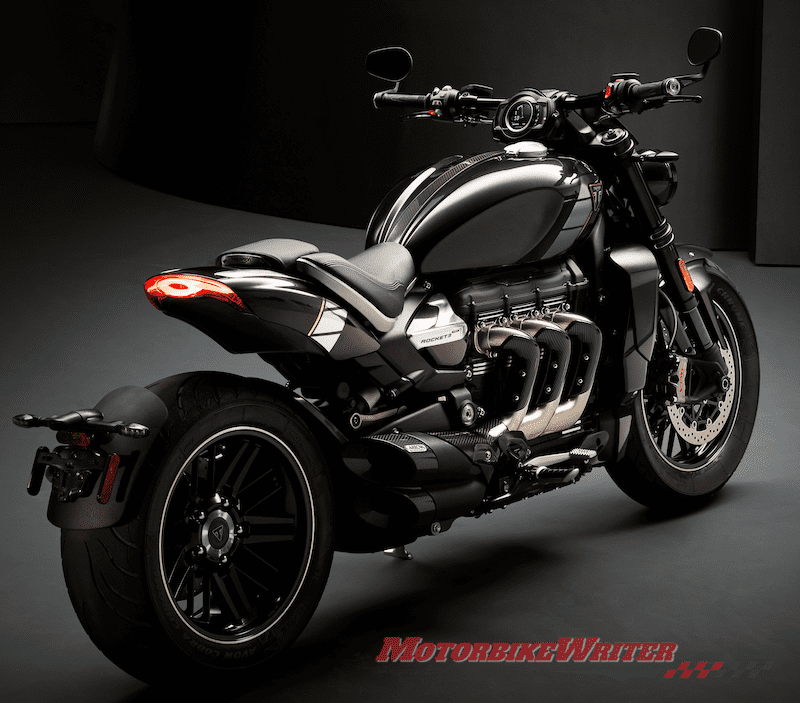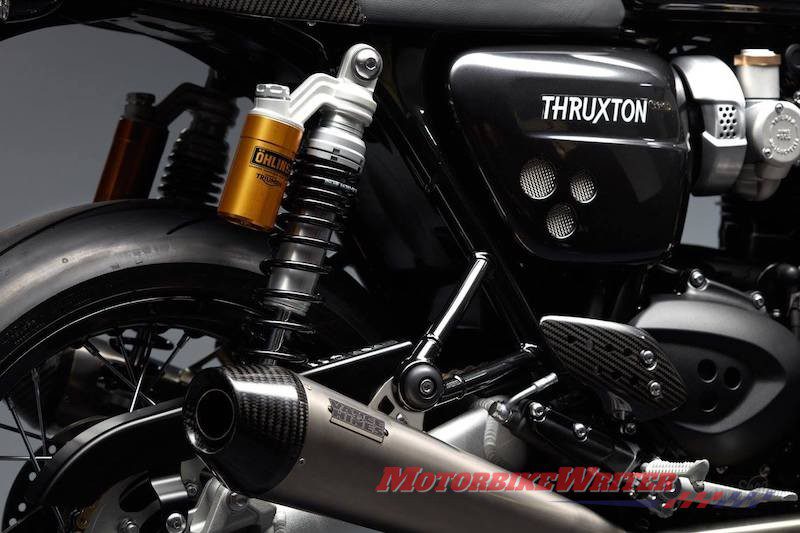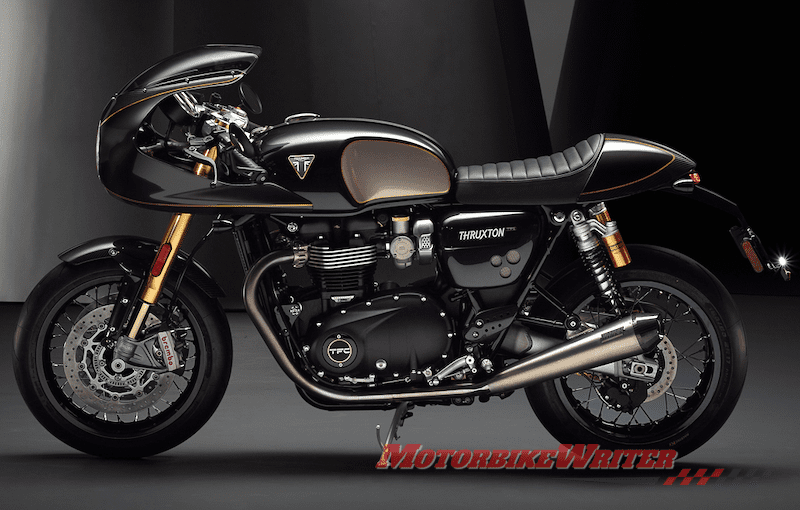Only 25 limited-edition 2.5-litre Triumph Rocket 3 TFC (Triumph Factory Custom) models will be coming to Australia, but you better be quick.
Triumph Motorcycles Australia spokesman Dale McBride says they have had “massive interest and most deposits already down for a chance to own the special edition”.
Pricing is yet to be announced.
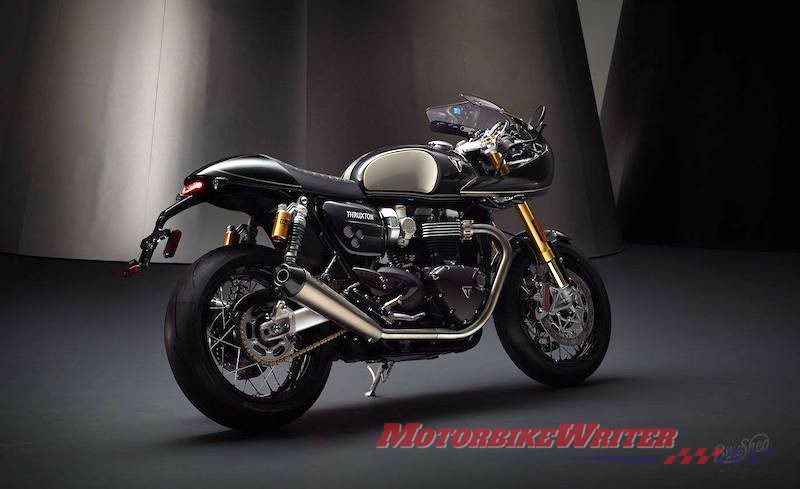
Meanwhile, the Thruxton TFC has finally been homologated for Australia with 80kW of peak power at 8000rpm, 115Nm of peak torque.
That’s 7.5kW more power and 4Nm more torque than the Thruxton R, while also 5kg lighter at 198kg.
These TFC models are the first of a new line of limited-edition motorcycles from the British manufacturer.
Only 750 numbered models of each will be made worldwide.
Dale says we can expect the Thruxton to arrive here in June.
While pricing for these limited-edition models has not yet been released, expect to pay much more than the current Thruxton R ($21,100) and Rocket 3 ($23,990).
Rocket 3 TFC
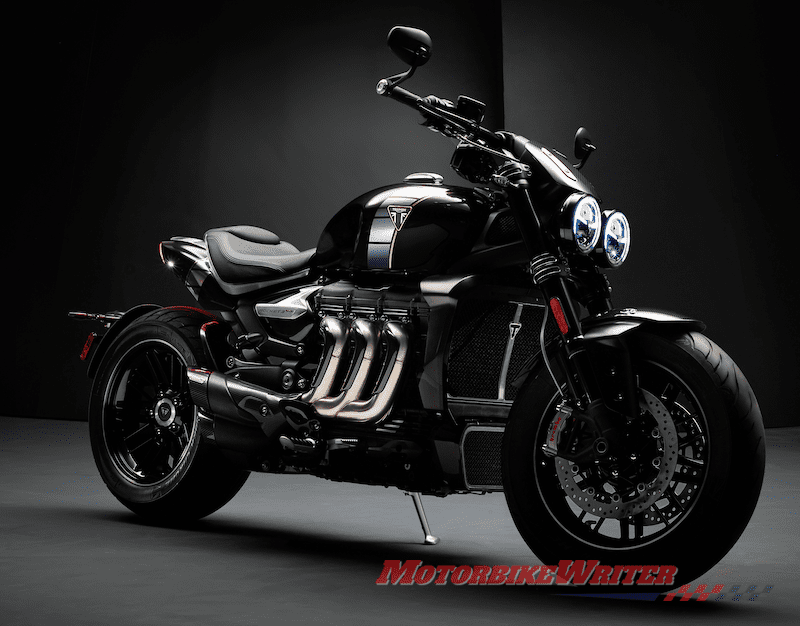
The Rocket 3 TFC is not a tarted-up current model, but based on the upcoming model with increased engine capacity from 2.3L to 2.5L.
So it’s still the biggest capacity engine of any production motorcycle in the world!
While the previous 2294cc triple delivered 109kW of power and 221Nm of torque, the new 2458cc triple has more than 125kW with the same peak torque.
The other big news is that it goes from twin shocks to an aluminium single-sided swingarm with a hidden Showa mono shock as we saw in this spy photo last year.
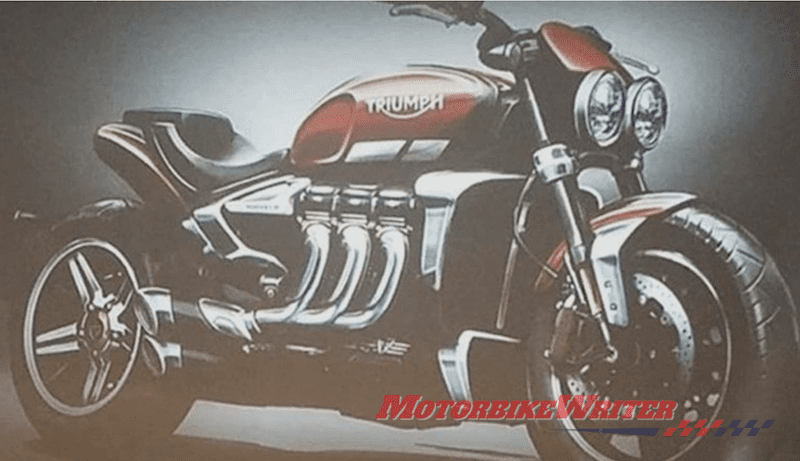
It will also have Showa cartridge forks and top-spec Brembo Stylema brake calipers.
Some of the other features of the Rocket TFC are Arrow exhaust, full LED lighting, colour TFT instruments, internally wired flat handlebars and loads of carbon fibre in the front guard, exhaust, fly screen, drive shaft cover, heel guards and tank strap.
Tech features include keyless ignition, tyre pressure monitors, cruise control, USB charging socket, cornering ABS and traction control, four riding modes (Road, Rain, Sport and Rider-configurable), up and down quickshiter and hill hold control.
There will also be an optional Bluetooth module to integrate GoPro control, music and phone operation, and Triumph’s navigation system which is powered by Google.
It will come in carbon black and matt carbon black paint scheme with brushed foil decals, gold accents and electroformed 3D Triumph badge, hidden pillion footrests and a leather interchangeable ‘twin or single’ seat.
Once the TFC model is sold out, we expect standard and touring models to follow. We are not sure how many of these features will be included on those models.
Triumph says the 2019 Rocket 3 TFC is more than 15% lighter than its predecessor with a 40+kg saving.
The base and touring models may be a little heavier without all that carbon.
Rocket TFC tech specs
| Engine Type | Inline 3-cylinder, water-cooled, DOHC |
| Capacity | 2458cc |
| Bore/Stroke | 110.2mm x 85.9mm |
| Maximum Power | Over 125kW (170PS) |
| Maximum Torque | Over 221Nm |
| Fuel system | Ride-by-Wire, fuel injected |
| Exhaust | Stainless 3 into 1 headers with 3 exit Arrow branded silencer / CAT box |
| Final drive | Shaft, bevel box |
| Clutch | Hydraulic, slip-assist |
| Gearbox | 6 speed |
| Frame | Full aluminium frame |
| Instruments | TFT multi-functional instrument pack with digital speedometer, trip computer, digital tachometer, gear position indicator, fuel gauge, service indicator, ambient temperature, clock and rider modes (Rain/Road/Sport/Rider-configurable) – Triumph TFT Connectivity System can be added with accessory fitted Bluetooth module |
| Swingarm | Single-sided, cast aluminium |
| Front Wheel | 17 x 3.6in cast aluminium |
| Rear Wheel | 16 x 7.5in cast aluminium |
| Front Tyre | 150/80 R17 V |
| Rear Tyre | 240/50 R16 V |
| Front Suspension | Showa ø47mm upside-down 1+1 cartridge front forks, compression and rebound adj., 120mm travel |
| Rear Suspension | Fully adjustable Showa piggyback reservoir RSU with remote hydraulic preload adjuster, 107mm travel |
| Front Brake | Dual 320mm discs, Brembo M4.30 Stylema 4-piston radial monobloc calipers, Cornering ABS |
| Rear Brake | Single 300mm disc, Brembo M4.32 4-piston monobloc caliper, Cornering ABS |
| Seat Height | 773mm |
| Rake | 27.9º |
| Trail | 134.9mm |
| Dry Weight | TBC |
| Fuel Tank Capacity | 19L |
Thruxton TFC
The Thruxton TFC will come with lashings of carbon fibre, Öhlins suspension, Brembo brakes with adjustable lever, Metzler Racetec RR tyres, Vance & Hines pipes, flip-up Monza fuel cap, all-LED lighting and brushed aluminium accents.
A highlight is the hand-painted gold lining.
Thruxton TFC also has a lightweight engine, body and frame components that strip weight.
Thruxton TFC tech specs
| Engine Type | Liquid cooled, 8 valve, SOHC, 270° crank angle parallel twin |
| Capacity | 1200cc |
| Bore/Stroke | 97.6 mm x 80.0 mm |
| Maximum Power | 80kW (109PS) @ 8000rpm |
| Maximum Torque | 115Nm @ 4850rpm |
| Fuel system | Multipoint sequential electronic fuel injection |
| Exhaust | Brushed 2 into 2 exhaust system, twin Vance and Hines titanium silencers with carbon fibre end caps |
| Final drive | O-ring chain |
| Clutch | Wet, multi-plate assist clutch |
| Gearbox | 6 speed |
| Frame | Tubular steel, aluminium cradle rails |
| Instruments | LCD multi-functional instrument pack with analogue speedometer and analogue tachometer, TFC specific dial faces |
| Swingarm | Twin-sided, aluminium, clear anodized |
| Front Wheel | 32-spoke 17 x 3.5in, black anodized rim |
| Rear Wheel | 32-spoke 17 x 5in, black anodized rim |
| Front Tyre | Metzeler RaceTec RR, 120/70 ZR17 |
| Rear Tyre | Metzeler RaceTec RR, 160/60 ZR17 |
| Front Suspension | Öhlins 43mm NIX30 upside down forks with adjustable rebound and compression damping, 120mm travel |
| Rear Suspension | Fully adjustable Öhlins twin shocks with piggy back reservoir, billet aluminium adjusters, 120mm rear wheel travel |
| Front Brake | Brembo twin 310mm floating discs, Brembo 4-piston radial monobloc calipers, ABS |
| Rear Brake | Single 220mm disc, Nissin 2-piston floating caliper, ABS |
| Seat Height | 815mm |
| Rake | 22.7º |
| Trail | 92.8mm |
| Dry Weight | 198 kg |
| Fuel Tank Capacity | 14.5L |
| Fuel Consumption | 5.2 L/100km |
| CO2 Emissions | EURO 4 Standard: 119 g/km |


